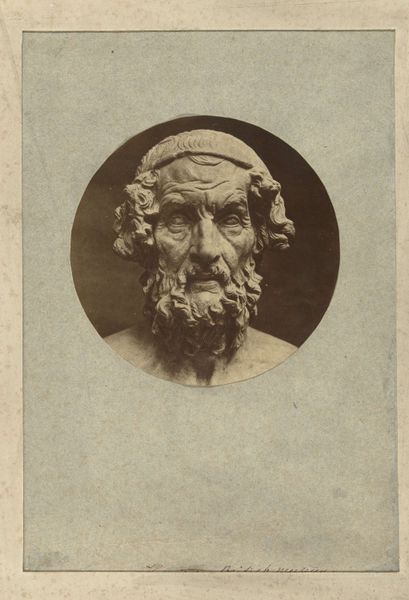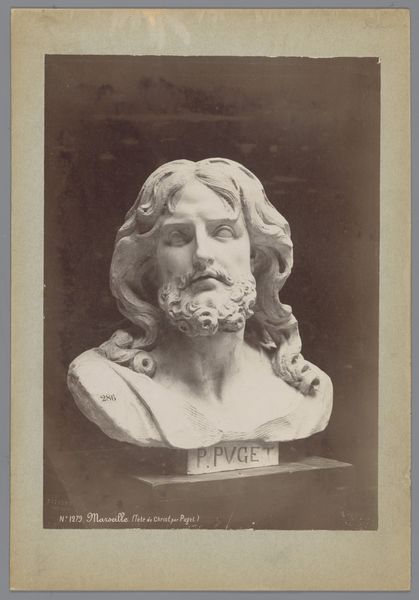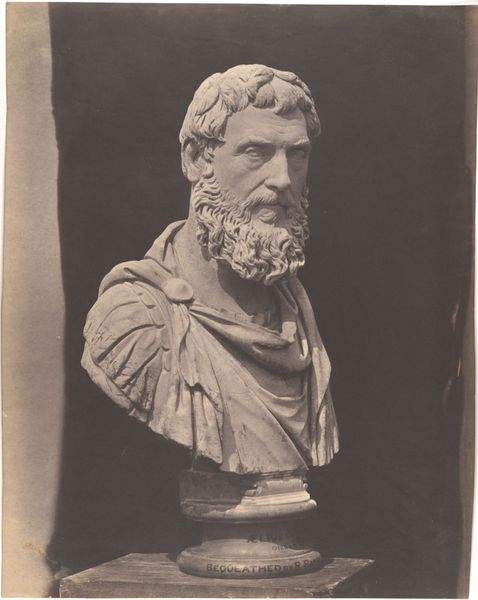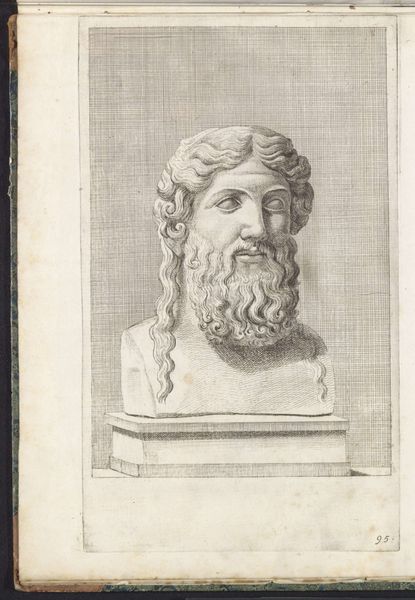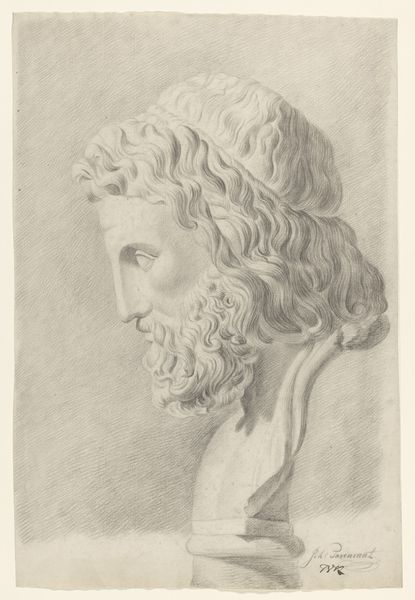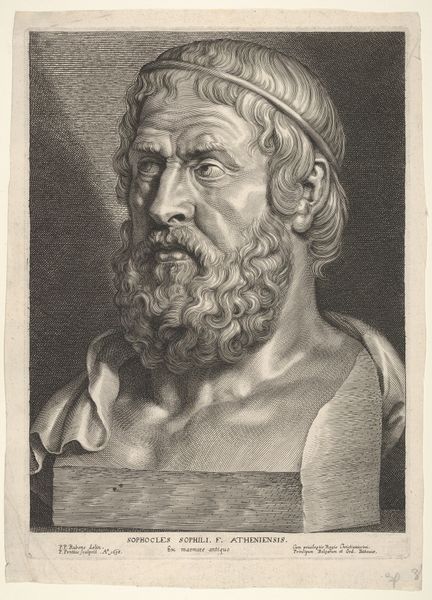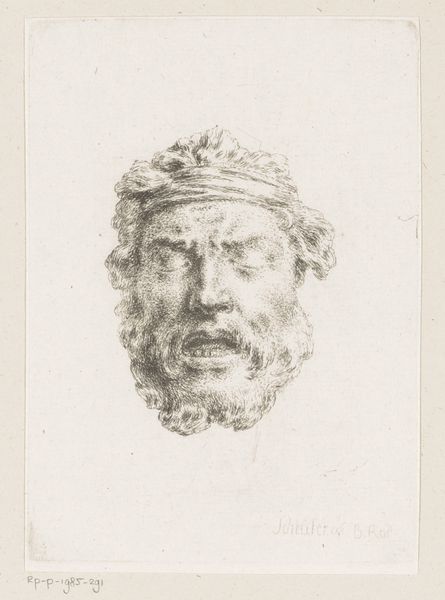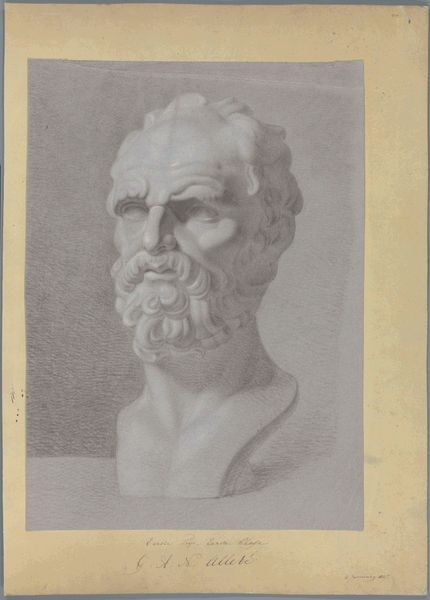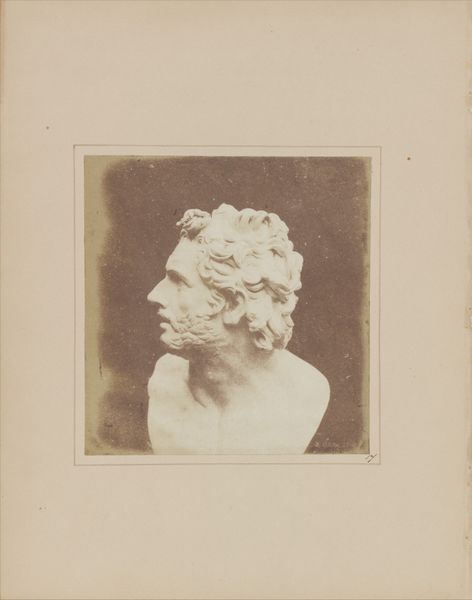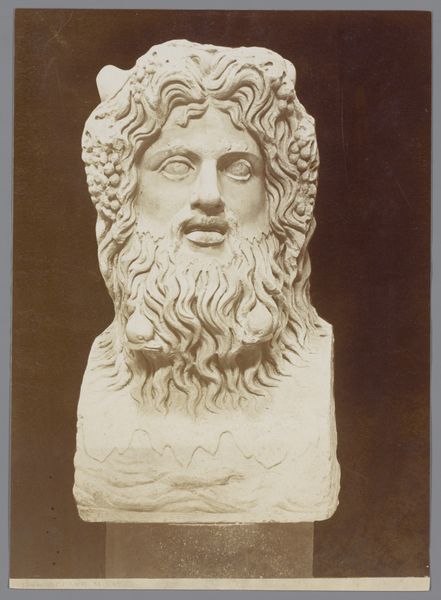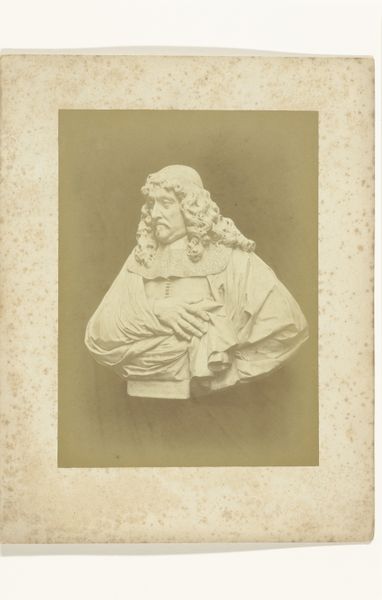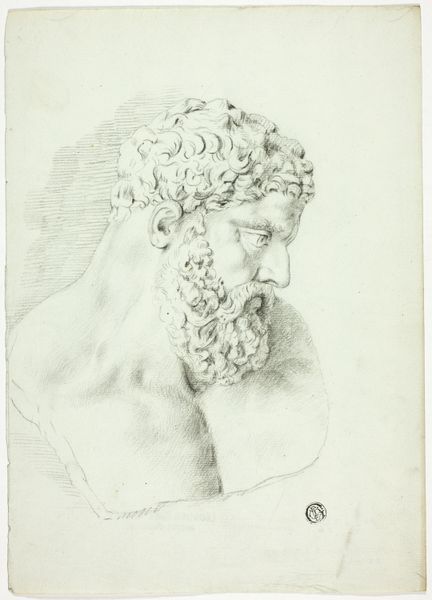
drawing, charcoal
#
portrait
#
drawing
#
pencil sketch
#
classical-realism
#
charcoal drawing
#
charcoal art
#
pencil drawing
#
portrait drawing
#
charcoal
#
history-painting
#
academic-art
Dimensions: height 630 mm, width 479 mm
Copyright: Rijks Museum: Open Domain
Curator: Take a look at this charcoal drawing. This is Gerrit Willem Dijsselhof’s "Academiestudie met Romeinse kop met helm," made sometime between 1876 and 1924. It's currently held in the Rijksmuseum's collection. Editor: The sheer restraint of the limited palette—charcoal, paper—gives it such a stark, immediate presence. I’m struck by how Dijsselhof coaxes out such volume from what appears to be an antique bust using such a simple medium. Curator: It’s a fascinating example of academic art. These studies of classical sculpture were a core part of an artist's training during this period. By meticulously copying these forms, artists were expected to internalize the principles of classical beauty and proportion. Editor: Notice the confident shading—the way the light falls on the helmet, casting a shadow across the face, speaks to a sophisticated understanding of form. But the real focal point is the texture he achieves in the beard. The medium virtually bristles there, it is incredibly well rendered. Curator: And don't forget that the 'Romeinse kop', the Roman head with a helmet, wasn't just an aesthetic exercise. It linked the aspiring artist to a lineage of artistic and political power, connecting them to the grandeur and authority of the Roman Empire, a subtle but powerful ideological message. Editor: You can almost feel the coolness of the marble coming through the rendering, a kind of material presence enhanced by the contrast between rough beard and the smoothness of the cheek. It's remarkable what he was able to conjure. Curator: Indeed, works like this reveal so much about how artists of that time learned their craft and also about the cultural values that were being passed down through these practices. It's much more than just a drawing; it's a document of an artistic and cultural ideology. Editor: Well said, the dialogue it strikes between history and technique opens so many interesting points. The subtleties captured offer, dare I say, both form and function.
Comments
No comments
Be the first to comment and join the conversation on the ultimate creative platform.
